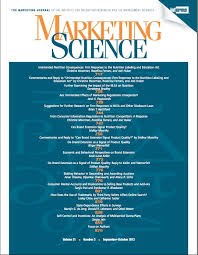
Mela, C., Roos, J. and Deng, Y. (2013). A Keyword History of Marketing Science Marketing Science, 32(1):8--18.
-
Affiliated authorJason Roos
-
Publication year2013
-
JournalMarketing Science
This paper considers the history of keywords used in Marketing Science to develop insights on the evolution of marketing science. Several findings emerge. First, ¿pricing¿ and ¿game theory¿ are the most ubiquitous words. More generally, the three C's and four P's predominate, suggesting that keywords and common practical frameworks align. Various trends exist. Some words, like ¿pricing,¿ remain popular over time. Others, like ¿game theory¿ and ¿hierarchical Bayes,¿ have become more popular. Finally, some words are superseded by others, like ¿diffusion¿ by ¿social networking.¿ Second, the overall rate of new keyword introductions has increased, but the likelihood they will remain in use has decreased. This suggests a maturation of the discipline or a long-tail effect. Third, a correspondence analysis indicates three distinct eras of marketing modeling, comporting roughly with each of the past three decades. These eras are driven by the emergence of new data and business problems, suggesting a fluid field responsive to practical problems. Fourth, we consider author publication survival rates, which increase up to six papers and then decline, possibly as a result of changes in ability or motivation. Fifth, survival rates vary with the recency and nature of words. We conclude by discussing the implications for additional journal space and the utility of standardized classification codes.